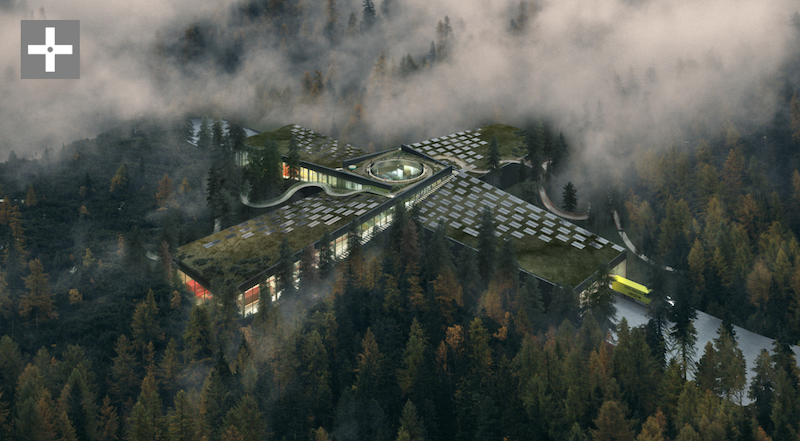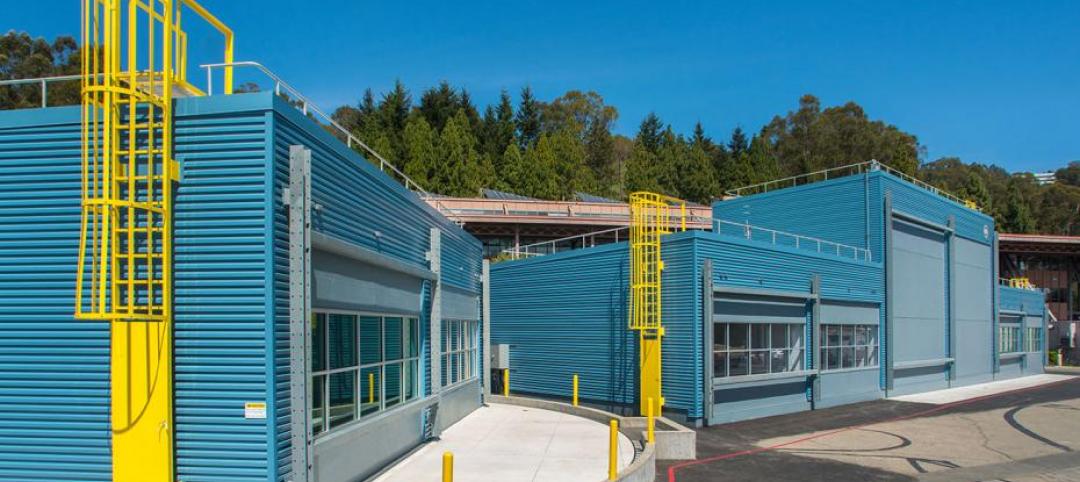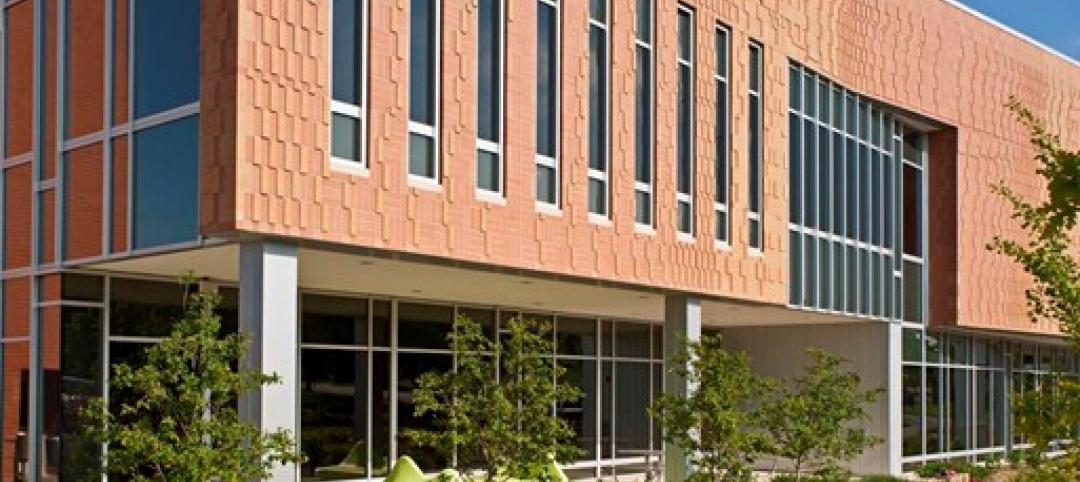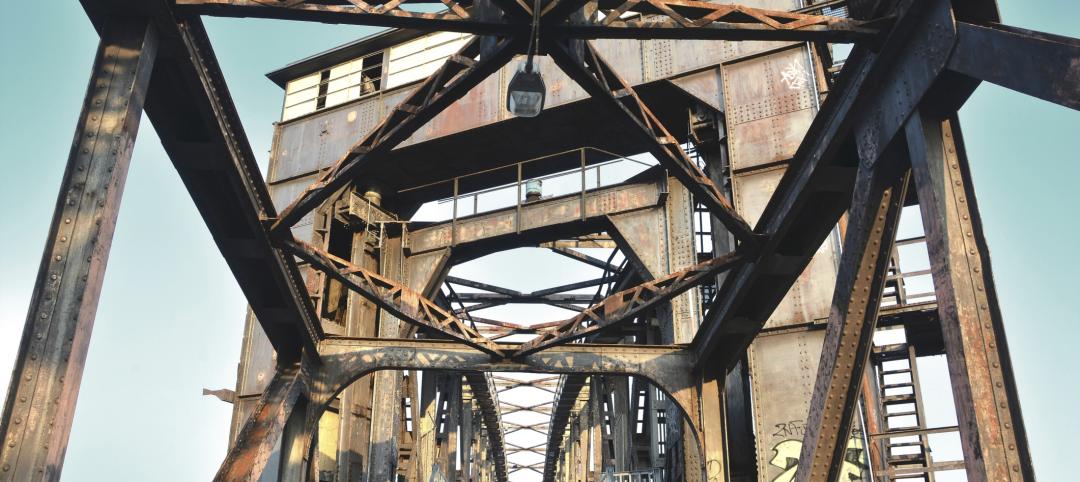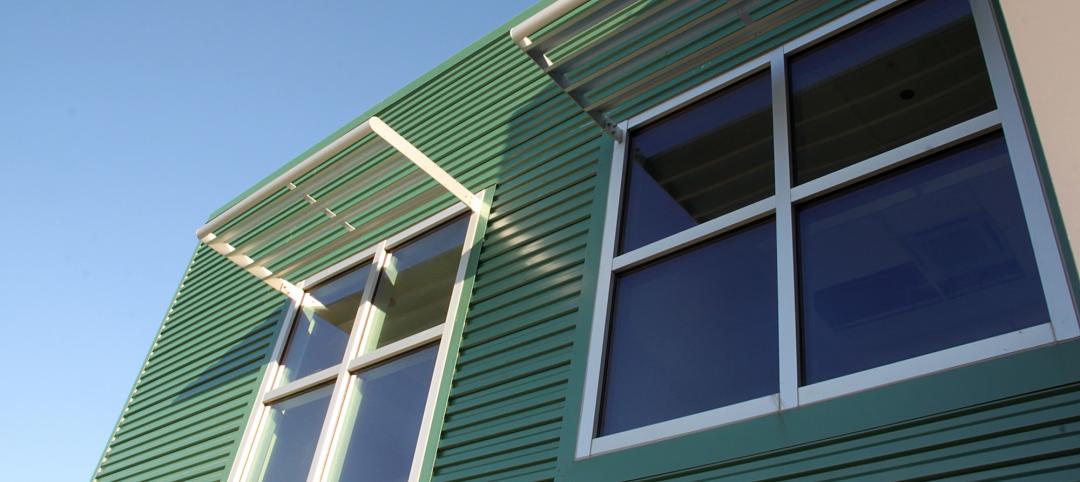BIG, together with Vestre, a Norwegian manufacturer or urban furniture, has unveiled designs for the world’s most sustainable furniture factory.
Dubbed The Plus, the project sits in the heart of the Norwegian forest and is envisioned as a village for a community dedicated to the cleanest, carbon neutral fabrication of urban and social furniture. The nearly 70,000-sf open production facility will double as a public 300-acre park for hiking and camping.
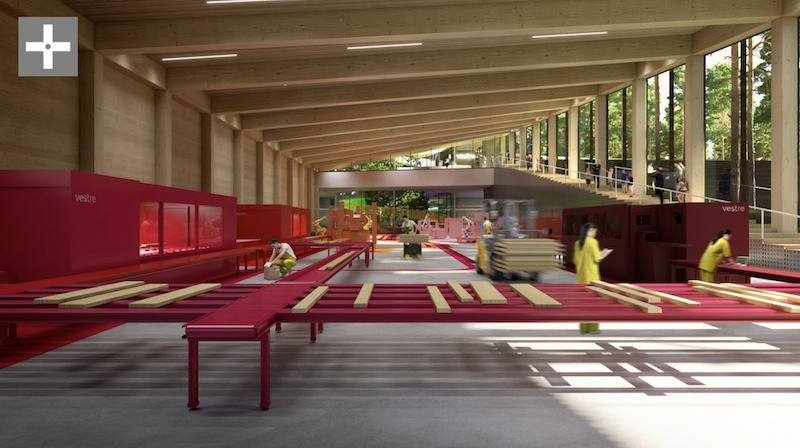
The project is conceived as a radial array of four main production halls – the warehouse, the color factory, the wood factory, and the assembly – that connect at the center, creating the ‘plus’ shape at the intersection. This layout will enable efficient, flexible, and transparent workflow between the manufacturing units. Each production unit will be built with a 21-meter free-spanning, CLT to create flexible, column-free spaces. Additionally, each wing will have one alternating ceiling corner lifted to create inclined roofs that allow views into the production halls and outside to the forest canopies.
See Also: The world’s first building made from carbon-fiber reinforced concrete starts construction in Germany
Located at the center of The Plus is the logistics office and exhibition center. The central hub wraps around a public, circular courtyard where the company’s latest outdoor furniture collections can be exhibited throughout the changing seasons. The plaza doubles as a panopticon for visitors and staff to view the factory’s production processes.
Visitors and staff can hike around the building on all four sides, concluding on the green roof terrace. An ADA-accessible ramp will allow wheelchairs and strollers along the path as well.
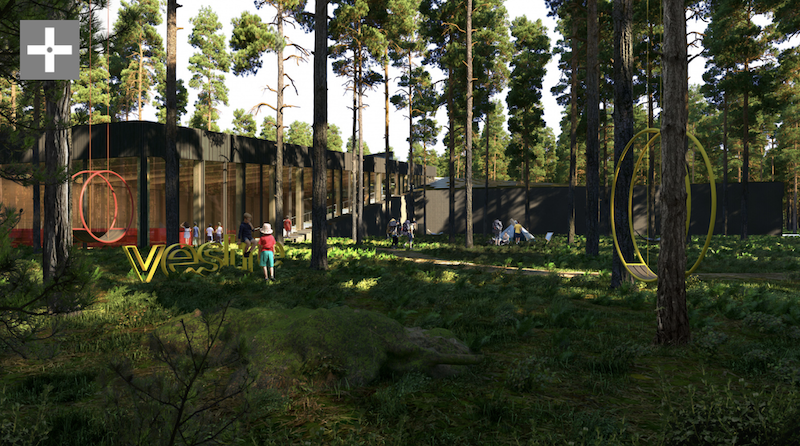
All building materials are being selected by their environmental impact; the facade will be built from local timber, low-carbon concrete, and recycled reinforcement steel. Every aspect of the design is based on principles of renewable and clean energy.
On the rooftop, 1,200 photovoltaic panels help power the factory. Excess heat from these panels is connected to an ice-water system for cooling, heat and cold storage tanks, heat pumps, and energy wells as a storage support system. The system contributes to at least 90% lower energy demand than that of a conventional factory.
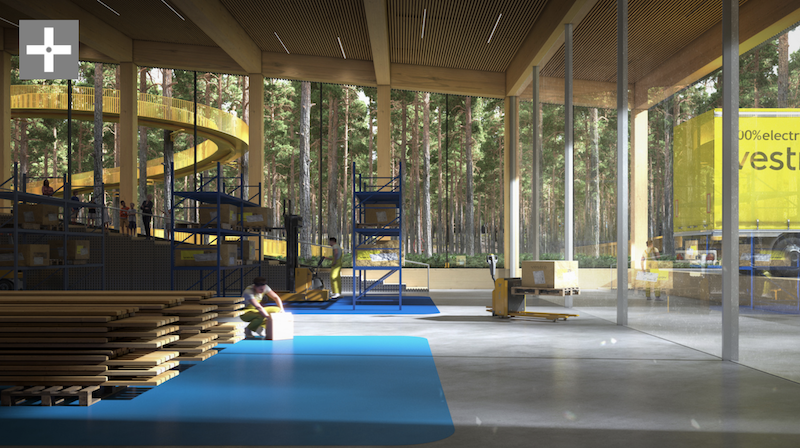
The facility will ensure a minimum of 50% lower greenhouse gas emissions than comparable factories. Due to all of the sustainable design elements, The Plus will the first industrial building in the Nordic region to achieve BREAM Outstanding.
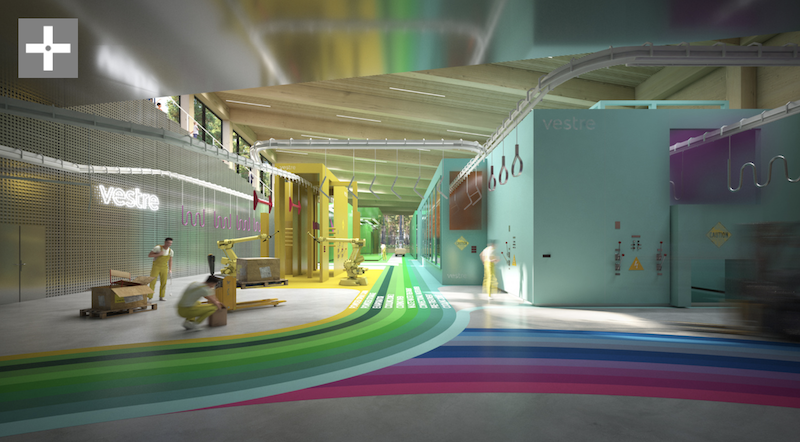
Smart robots, self-driving trucks, and a tablet to manage the entire factory will all be included. Each machine is assigned one of Vestre’s 200 colors, which will spill onto the floors and lead back into the central roundabout. The colorful mapping creates strong visual cues that help guide and explain the workflow of the facility, allowing visitors to easily follow the production process.
The project is currently in progress.
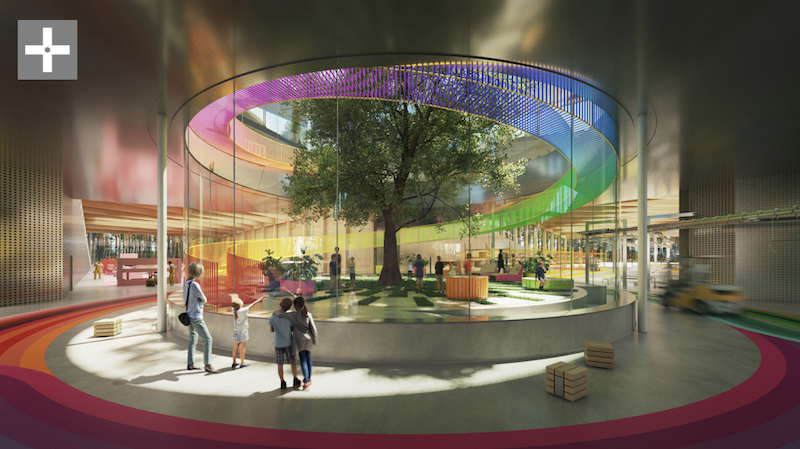
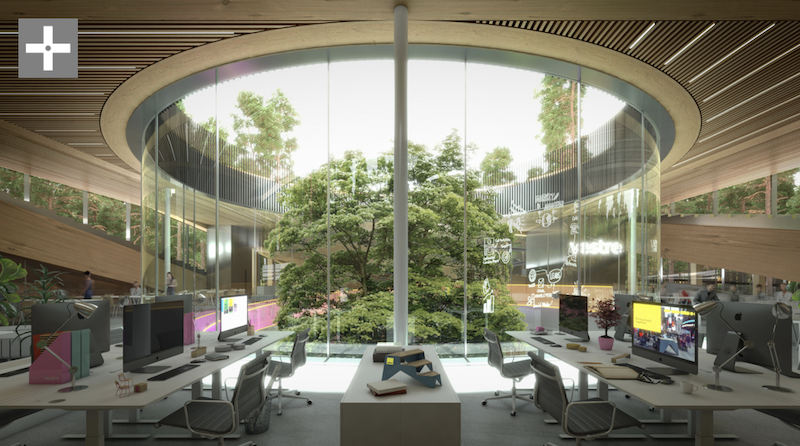
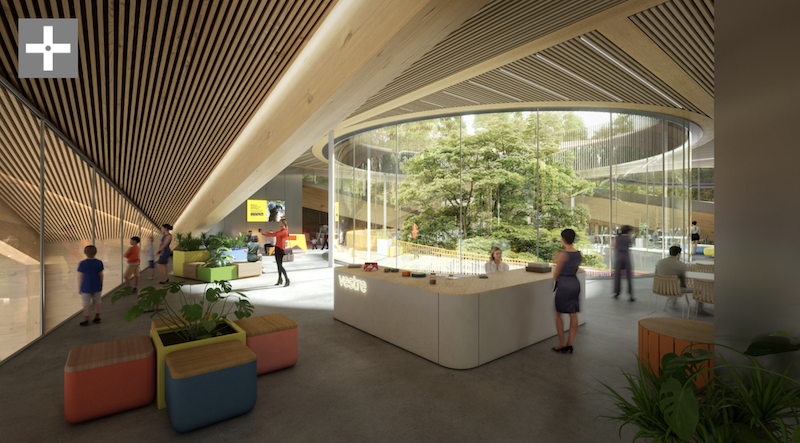
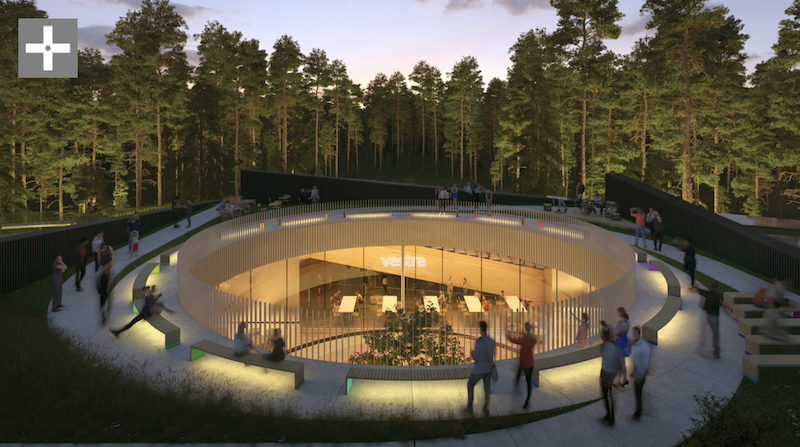
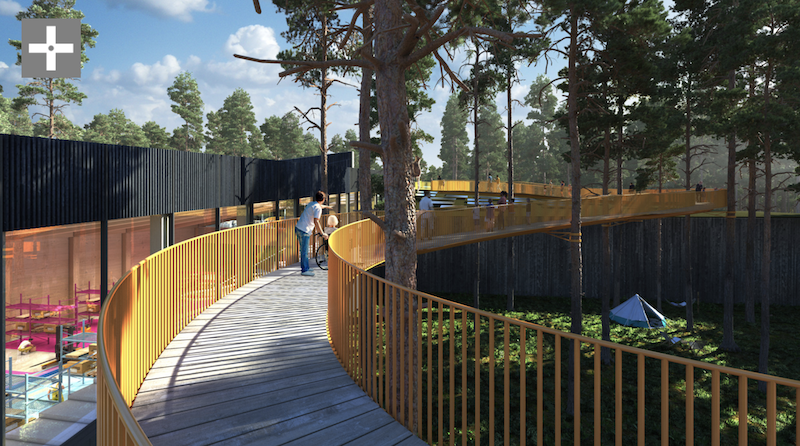
Related Stories
| Jul 14, 2014
Foster + Partners unveils triple-glazed tower for RMK headquarters
The London-based firm unveiled plans for the Russian Copper Company's headquarters in Yekaterinburg.
| Jul 10, 2014
Berkeley Lab opens 'world's most comprehensive building efficiency simulator'
DOE’s new FLEXLAB is a first-of-its-kind simulator that lets users test energy-efficient building systems individually or as an integrated system, under real-world conditions.
| Jul 7, 2014
7 emerging design trends in brick buildings
From wild architectural shapes to unique color blends and pattern arrangements, these projects demonstrate the design possibilities of brick.
| Jul 2, 2014
Emerging trends in commercial flooring
Rectangular tiles, digital graphic applications, the resurgence of terrazzo, and product transparency headline today’s commercial flooring trends.
| Jun 30, 2014
Report recommends making infrastructure upgrades a cabinet-level priority
The ASCE estimates that $3.6 trillion must be invested by 2020 to make critically needed upgrades and expansions of national infrastructure—and avoid trillions of dollars in lost business sales, exports, disposable income, and GDP.
Sponsored | | Jun 27, 2014
SAFTI FIRST Now Offers GPX Framing with Sunshade Connectors
For the Doolittle Maintenance Facility, SAFTI FIRST provided 60 minute, fire resistive wall openings in the exterior using SuperLite II-XL 60 insulated with low-e glazing in GPX Framing with a clear anodized finish.
| Jun 18, 2014
Arup uses 3D printing to fabricate one-of-a-kind structural steel components
The firm's research shows that 3D printing has the potential to reduce costs, cut waste, and slash the carbon footprint of the construction sector.
| Jun 16, 2014
6 U.S. cities at the forefront of innovation districts
A new Brookings Institution study records the emergence of “competitive places that are also cool spaces.”
| Jun 12, 2014
Austrian university develops 'inflatable' concrete dome method
Constructing a concrete dome is a costly process, but this may change soon. A team from the Vienna University of Technology has developed a method that allows concrete domes to form with the use of air and steel cables instead of expensive, timber supporting structures.
| May 29, 2014
7 cost-effective ways to make U.S. infrastructure more resilient
Moving critical elements to higher ground and designing for longer lifespans are just some of the ways cities and governments can make infrastructure more resilient to natural disasters and climate change, writes Richard Cavallaro, President of Skanska USA Civil.


